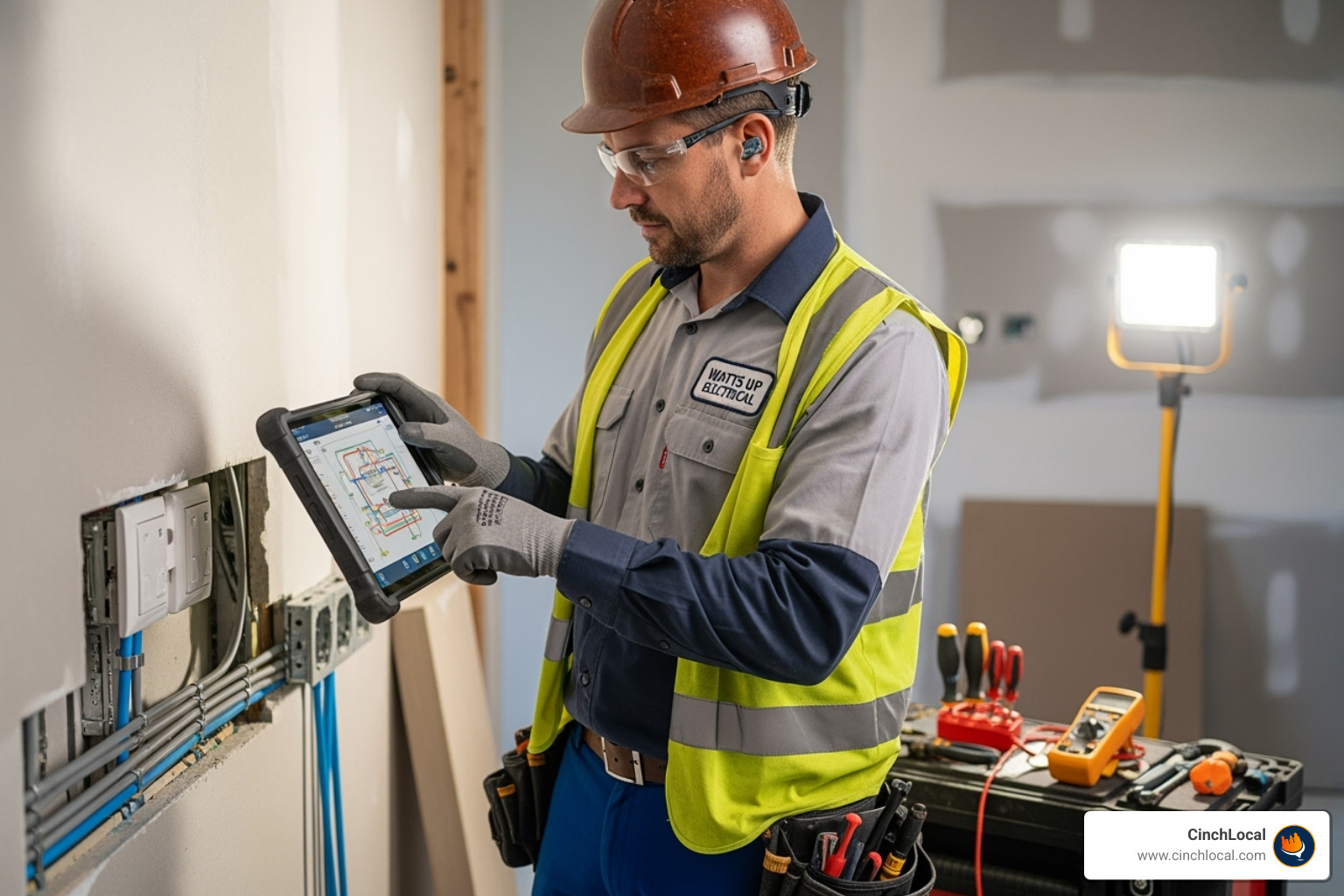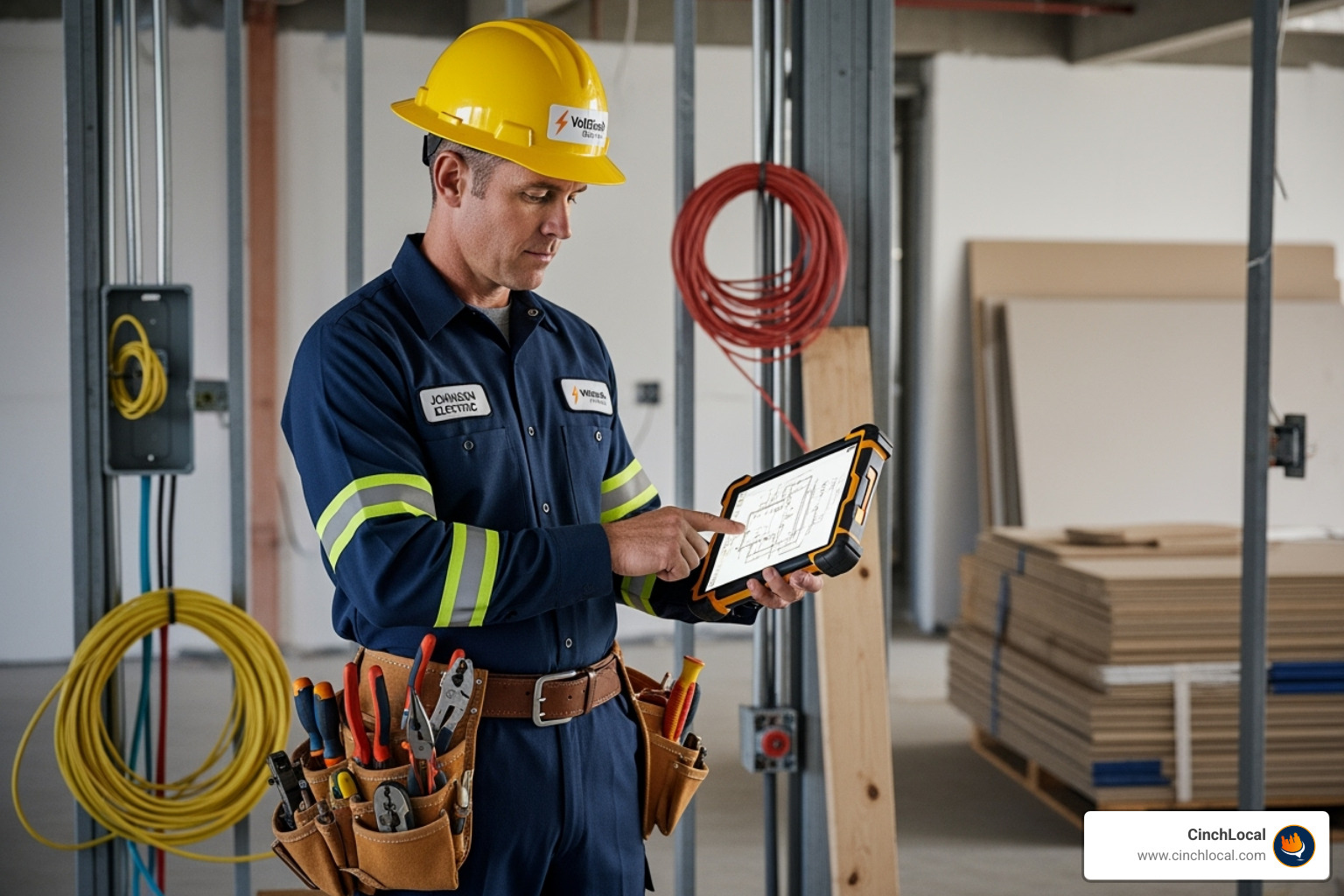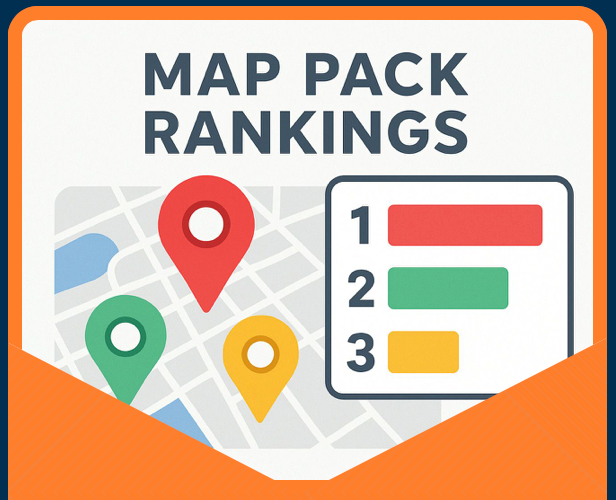
Cary Byrd // Founder of CinchLocal
Web Designs That Nail It for Construction Companies

Why web design for construction company Success Starts With Getting the Basics Right
Web design for construction company success depends on understanding what makes visitors pick up the phone and call. When someone searches for a contractor online, they're not just looking for information - they're sizing up who they can trust with their biggest investment.
Essential Elements for Construction Website Success:
- Professional photography - High-quality project images that showcase craftsmanship
- Clear navigation - Services, portfolio, and contact info easy to find
- Mobile optimization - 59.16% of visitors use mobile devices
- Trust signals - Customer reviews, certifications, and team photos
- Strong calls-to-action - Phone numbers and quote forms prominently placed
- Fast loading speed - Sites that load quickly keep visitors engaged
- Local SEO elements - Service areas and Google My Business integration
Your website acts as your digital storefront, often creating the first impression potential customers have of your business. Research shows that displaying reviews can boost sales by 380% , while poor website design can send prospects straight to your competitors.
With nearly 60% of construction website visitors using smartphones, your site must work flawlessly on small screens. This means readable text, clickable buttons, and fast-loading images.
I'm Cary Byrd, CEO of CinchLocal, and I've spent over 10 years helping contractors transform their online presence through strategic web design for construction company projects. My team has worked with 60+ construction service companies, learning what converts browsers into buyers.

Basic web design for construction company glossary: - construction seo company - local seo general contractors - seo for construction companies
10 Must-Have Design Elements That Build Trust
Handing someone $50,000+ for a remodel is a big leap of faith. Your website has to earn that trust in seconds.
Essential elements:
- Clear navigation – “Services, Portfolio, Reviews, Contact” visible at a glance.
- Hero visual – one striking project photo or looped video replacing generic stock art.
- Professional photography – before-and-after shots, not phone pictures.
- Bold CTAs – contrasting colours, “Get a Free Quote”, repeated.
- Review carousel – BrightLocal reports 46 % trust online reviews as much as family.
- Awards & certification badges – BBB, OSHA, local builders’ association.
- Service icons – help visitors scan capabilities quickly.
- Fast loading – sub-3-second pages beat 8-second competitors.
- SSL security – the padlock matters.
- Accessible design – proper headings, alt tags, colour contrast.
For construction-specific examples, see our roofing websites portfolio.

Pages Every High-Converting Construction Website Needs
Treat your site like a job schedule—each page has a role and deadline.
Main crew:
- Services – one parent page plus individual pages for each service (kitchen remodels, commercial builds, etc.) to grab long-tail searches.
- Portfolio/Gallery – filterable by project type with stats and photos.
- About Us – team bios, company values, certifications.
- Reviews – mix of text, video and star-ratings schema.
- Contact / Get Quote – phone, text, form, service-area map.
Support team: Blog (SEO & thought leadership), FAQs, Careers, and dedicated city pages for local SEO.
For a deeper blueprint, see our guide to website builders for construction companies.
Checklist: web design for construction company Page Map
- Keep top navigation lean: Home | Services | Portfolio | Reviews | About | Contact
- Use internal links (service → related project) and avoid orphan pages.
- Make every page reachable in 3 clicks or fewer.
Web Design for Construction Company: Lead-Gen That Pays the Bills
A pretty website that doesn’t ring the phone is just an online brochure. Build every page around a single question: “What action do we want the visitor to take next?”
High-performing strategies:
- Free calculators or checklists (e.g., “Kitchen Remodel Budget Sheet”) in exchange for an email.
- Interactive quote forms that qualify leads while collecting details.
- Sticky “Tap to Call” bar for mobile users.
- Exit-intent pop-ups with a discount or guide—polite, easy to close on phones.
- Email opt-ins that promise real value: seasonal maintenance tips, permit checklists.
Need traffic to feed those funnels? Our SEO for Construction Companies playbook covers that.
CTA Placement Secrets
- Always show a primary CTA above the fold.
- Drop short inline forms after showcasing a project.
- Repeat contact info in the footer for the “scroll-to-find” crowd.
Heat-map studies show right-aligned buttons get 30 % more clicks, and CTAs placed directly after testimonials are conversion gold.
Writing CTAs That Convert
Be specific and benefit-driven:
- Weak: “Submit”
- Strong: “Get Your Free Project Estimate”
Test colours—orange for urgency, green for “go”—and track results in analytics.
Showcasing Projects, Testimonials & 2025 Trends
Your portfolio should move prospects from “nice work” to “let’s talk.”
What’s working:
- Drag-to-reveal before/after sliders.
- Drone footage for scope on commercial builds.
- 60-second time-lapse videos that crush it on social media.
- Sustainability badges for eco-friendly projects.
- Optional dark mode for late-night mobile browsing.
- AR previews are emerging—great talking point even if you start with a single demo project.
See more inspiration in our roofing design gallery.
Portfolio Best Practices
- 1200-pixel, well-lit images (compress for speed).
- Multiple angles and detail close-ups.
- Filters by project type or size.
- Swipe-friendly galleries on phones.
Powering Up Testimonials
- Sub-2-minute video reviews filmed in the finished space.
- Written reviews with project photos.
- Schema markup so your star rating appears in Google.
- Sprinkle testimonials on service, portfolio and contact pages.

Mobile, SEO & Performance Best Practices
Nearly 60 % of visitors are on a phone, so design for thumbs first.
Performance must-dos:
- Responsive grids and touch-friendly 16 px text.
- Compressed images (WebP) and lazy loading.
- Core Web Vitals: LCP < 2.5 s, FID < 100 ms, CLS < 0.1.
- Local schema markup and Google Business Profile integration.
- SSL for trust and rankings.
Common pitfalls:
- 5 MB hero images that crush load time.
- Budget hosting that crashes during storms—exactly when homeowners search “emergency repair.”
- Pop-ups that cover content and can’t be closed on mobile (Google hates these).
Fixing these issues often lifts both rankings and conversion rates overnight. For deeper tactics, explore our list of SEO companies that nail it for contractors.
Stand Out & Plan Your Build: Inspiration, Cost, Timeline
To rise above cookie-cutter contractor sites, lean into what makes your firm unique—family legacy, sustainable focus, luxury craftsmanship, etc. Use colour, typography and imagery that reinforce that story.
Budget & Timeline Snapshot
| Approach | Cost | Timeline | Use When |
|---|---|---|---|
| DIY template | $500-$2k | 2-4 weeks | Start-ups, micro budgets |
| Pro template/customization | $2k-$8k | 4-6 weeks | Need speed + polish |
| Semi-custom | $8k-$20k | 6-8 weeks | Want unique look without blank cheque |
| Fully custom | $20k-$50k+ | 8-12 weeks | Large firms, complex features |
Content readiness (photos, copy) is the #1 timeline accelerator.
Choosing the Right Partner
Look for an agency that:
- Shows construction sites in its portfolio.
- Proves sites load fast on mobile.
- Explains its process, revision limits and post-launch support.
CinchLocal specialises in roofing, but the same conversion principles apply to general construction. See how our General Contractor SEO service dovetails with a high-performing website.

Frequently Asked Questions about Construction Web Design
How long does it take to design and launch a construction website?
The timeline for web design for construction company projects varies dramatically based on what you're building and how prepared you are when you start. Simple template sites can go live in just two weeks, while complex custom builds can take four months or more.
Content readiness makes the biggest difference. If you already have professional photos, written descriptions of your services, and clear messaging about what makes you different, you're weeks ahead of companies that start from scratch.
A realistic timeline breakdown: Planning and strategy takes 1-2 weeks. Design and revisions typically need 3-5 weeks. Development and testing requires another 3-4 weeks. Content creation and entry can take 1-2 weeks if you're prepared. Final testing and launch usually needs about a week.
The sweet spot for most construction companies is 8-12 weeks for a custom site that really stands out and converts well.
What is the typical cost range for a construction company website?
Web design for construction company budgets range from about $2,000 for basic template sites up to $30,000 or more for fully custom builds with advanced features. Most established construction companies find their sweet spot in the $8,000-$20,000 range for a professional site that includes custom design, mobile optimization, SEO setup, and integration with their business systems.
The biggest cost factors include professional photography ($1,000-$3,000), copywriting and content creation ($2,000-$5,000), and custom functionality like project estimators or scheduling systems ($3,000-$10,000). Ongoing maintenance typically runs $200-$500 per month.
Here's the thing about website budgets: Cheap sites usually cost more in the long run because they don't generate leads effectively. A $15,000 website that brings in two extra projects per month pays for itself quickly, while a $3,000 site that doesn't convert visitors is just an expensive business card.
How can social media channels integrate with my site to drive leads?
Social media integration for construction companies goes way beyond just adding follow buttons to your footer. The most effective strategies use your website and social media to work together as a lead generation system.
The best integration strategies start with content that works across platforms. When you publish a new blog post about kitchen remodeling trends, that same content can become Instagram posts, Facebook updates, and LinkedIn articles. Your website becomes the hub where all this content lives permanently, while social media drives traffic back to your site.
Embedding your Instagram project galleries directly on your website keeps your portfolio fresh and shows real-time social proof. When potential customers see that you're actively posting new projects and getting engagement, it builds confidence in your business.
Facebook has become surprisingly effective for customer service and lead generation. Many homeowners will message you on Facebook before they'll pick up the phone. Having those conversations flow naturally back to your website creates a smooth path from social media browser to qualified lead.
Conclusion
Building a successful web design for construction company website isn't just about looking professional online - it's about creating a digital foundation that works as hard as your crew does in the field.
Throughout this guide, we've covered the essential elements that separate amateur websites from lead-generating powerhouses. Trust elements like customer reviews, professional certifications, and high-quality project photos aren't just nice-to-have features - they're the digital equivalent of a strong foundation.
The mobile revolution has fundamentally changed how people find and evaluate contractors. With nearly 60% of your visitors browsing on smartphones , your website must work flawlessly on small screens. This isn't just about making things smaller - it's about reimagining the entire user experience for thumbs instead of mouse clicks.
Your portfolio pages should tell compelling stories rather than simply displaying pretty pictures. When prospects see your before-and-after galleries, they should be able to envision their own project change. Clear calls-to-action and easily accessible contact information need to guide visitors naturally toward picking up the phone or filling out a quote request.
The construction industry has been slower to accept new web technologies compared to other sectors, which creates a golden opportunity for forward-thinking contractors. Companies using virtual tours, drone footage, and interactive project galleries are standing out in a sea of outdated, template-based websites.
SEO and performance optimization directly impact your ability to generate leads online. Google's mobile-first indexing means your mobile experience affects search rankings more than ever. Fast-loading pages, local SEO optimization, and technical excellence aren't just technical requirements - they're competitive advantages that put you ahead of contractors still using basic websites.
Your website often provides the first impression potential customers have of your business. In an increasingly competitive construction market, professional web design for construction company success becomes the foundation for sustainable business growth. It's your 24/7 sales representative, working to attract, educate, and convert prospects into profitable projects.
At CinchLocal, we've spent years perfecting digital marketing strategies for construction professionals. While our expertise centers on roofing contractors, the principles of effective web design apply across all construction trades. For construction companies ready to dominate their local markets and attract high-quality leads, our General Contractor SEO service provides comprehensive digital marketing strategies that complement a well-designed website.
Your website should be as reliable and hardworking as you are. When designed correctly and optimized strategically, it becomes your most effective business tool - one that never takes a day off and consistently delivers results.
Want Us to Uncover Hidden 'Footprint Gaps' And Critical Blind Spots That’s Quietly Draining Calls, Jobs, and Profits?
Simply Fill Out The Form Below:








